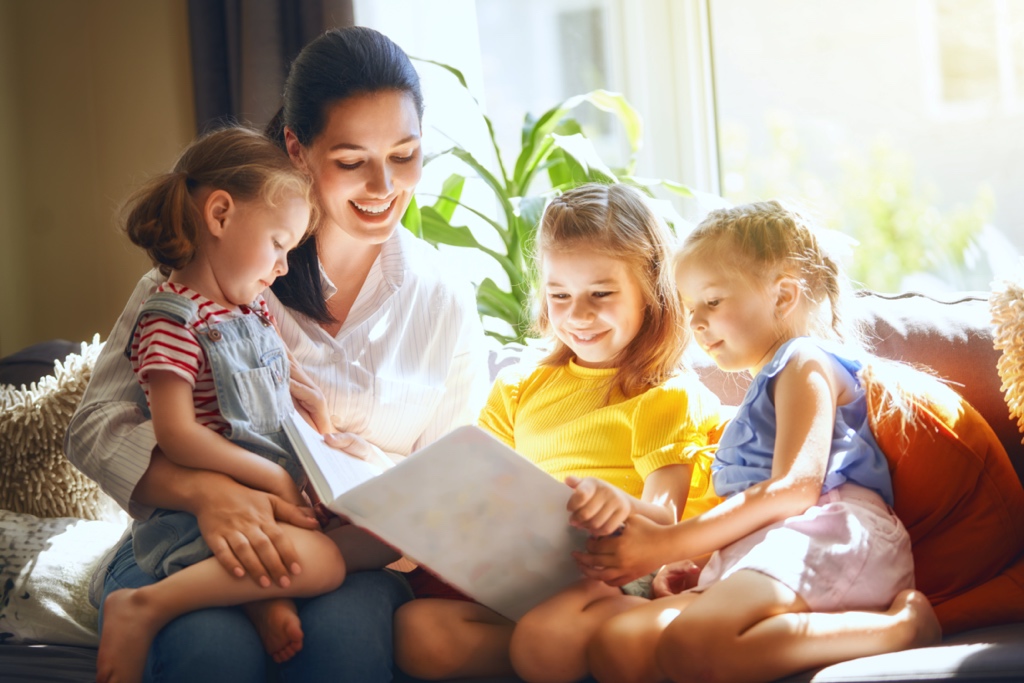Young children often find it difficult to express their feelings, mostly because they do not really know what they are feeling. Making children aware of the multitude of emotions that exist and teaching them to recognise and name their feelings, cultivates emotional intelligence. During my career as an Art Psychotherapist working with children, I found the idea of the artwork becoming a ‘third person’ in the session particularly helpful in developing this understanding. This triangular dialogue between therapist, child and artwork helps to make the process feel safer as feelings can be explored through
the artwork, rather than in a two-way dialogue focussing directly on the child.
However, you do not have to be a qualified art therapist to practice some of these principles at home. In a similar way, parents, grandparents or carers can help children express and name their feelings by engaging in creative activities such as reading, drawing and art, which are not only bonding, but also build trust and encourage dialogue about each other’s inner worlds.
The benefits of reading with children of all ages, is well documented, including increased vocabulary, literacy, language skills, concentration, imagination, empathy and supporting mental wellbeing. Even for babies and toddlers, who are often already inundated with screens and plastic toys, the action of paging through a book and experiencing the difference in temperature and feel in the texture of paper, is valuable in sensory development. In short, reading a picture book together with your child is a feast for the senses, building positive brain pathways through touch, sight and hearing. Little did I know, when I started reading with my own children as babies, what a valuable investment I was making, not only in these benefits, but also in my future relationship with my children.
Reading with children at any time during the day is beneficial, but from my professional and personal experience a bedtime story is invaluable in the relationship between parent and child. Snuggling up with a book at the end of the day when children are tired and ready to go to sleep is not only a peaceful way to end the day, but a perfect time to gently explore your child’s feelings. Children do not always respond well to ‘what’ and ‘why’ questions and so the story and illustrations can now become a friendly third person through which questions can be asked.
For example, ‘I wonder how the bear felt when he was lost in the wood?’ or ‘how do you think the bear will feel when he finds his house again?’ In this way, the child can safely explore his or her own feelings through the story and the characters in the book and learn how to name personal feelings. Additionally, associating and relating to characters helps children learn to empathise with others and, not surprisingly, this helps to bring their own experiences, fears and questions into the discussion, giving a welcome glimpse into this inner world. The child, on the other hand, feels heard and learns that it is safe to express your feelings, which in turn leads to healthy attachment and bonding. The ability to safely voice emotions are valuable tools in times of stress and these skills will be carried forward into adulthood and ultimately into parenthood.
I had anticipated that this bedtime ritual with my own children would slowly fizzle out by the time they started reading chapter books by themselves, however, this time together has become so valuable to us all that even now as teenagers, we still snuggle up in bed to talk about the day, before they drift off to sleep after reading by themselves.
Drawing on my experience as an Art Psychotherapist and work as an artist, I decided to write and illustrate my own children’s books where the characters are seen to be listening to one another – the basis for bonding. The busy, layered illustrations – which I create through collage – give opportunity for exploration and discussion. The process of writing and illustrating my books have, in many ways, been a family effort too with my children eager to give their input and even my husband and two Westies, The Barkingtons, agreeing to be drawn.
I am convinced that these early creative childhood experiences spent together are irreplaceable building blocks in forming positive relationships for life, and help develop emotionally intelligent individuals with empathy for the world and those around them.


